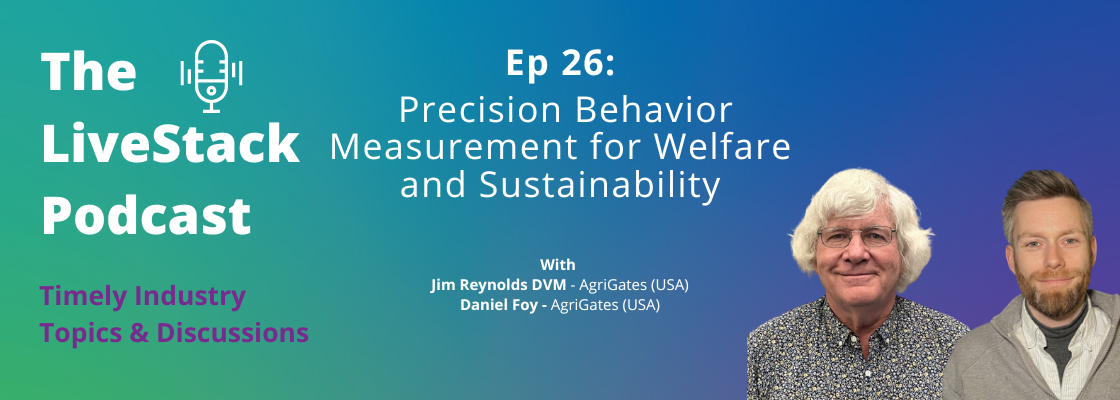In the evolving landscape of food animal agriculture, measuring behavior is no longer just about observation, it’s about precision, scale, and measurable impact. In this episode, Daniel Foy and Dr. Jim Reynolds examine how behavior data has progressed from handwritten field notes to high-frequency, sensor-driven systems powered by machine learning. This transformation has redefined how we understand welfare, manage animals, and measure sustainability on farms.
Jim and Daniel reflect on the early days of behavior measurement, where simple metrics like lying and standing time were manually recorded and used to make management decisions. Today, those same behaviors are captured by wearable IMU sensors, interpreted through automated video systems, and enriched with environmental and health data to provide a clearer picture of animal welfare. They discuss how behavior has become the most sensitive indicator of welfare, often signaling issues before they become visible, and how these insights are becoming increasingly vital as farms contend with heat stress, lameness, and other welfare risks under changing climate and production pressures.
At the same time, the episode underscores the importance of ethics and human interpretation, even in a world of automation. Behavior doesn’t happen in a vacuum, and Jim emphasizes that good data still requires good questions and context. The conversation also explores how behavior metrics are now being tied to sustainability reporting, providing the kind of transparent, animal-centered evidence that supply chains and consumers increasingly expect.
Whether you work in research, animal health, precision technology, or farm management, this episode offers an in-depth look at why behavioral sensing is becoming a central pillar of modern livestock care and food system sustainability.
To learn more or share feedback, reach out at info@agrigates.io
Listen now on Apple Podcasts | Spotify

